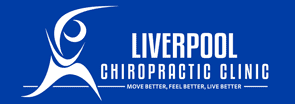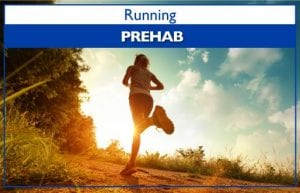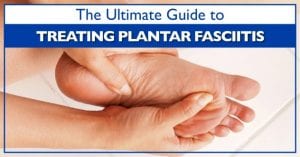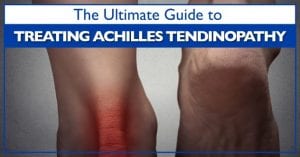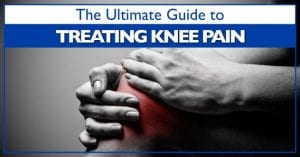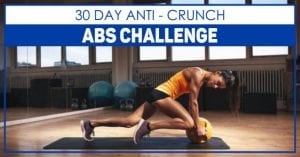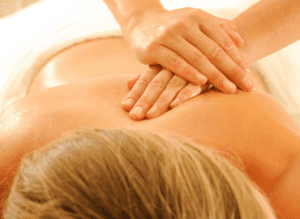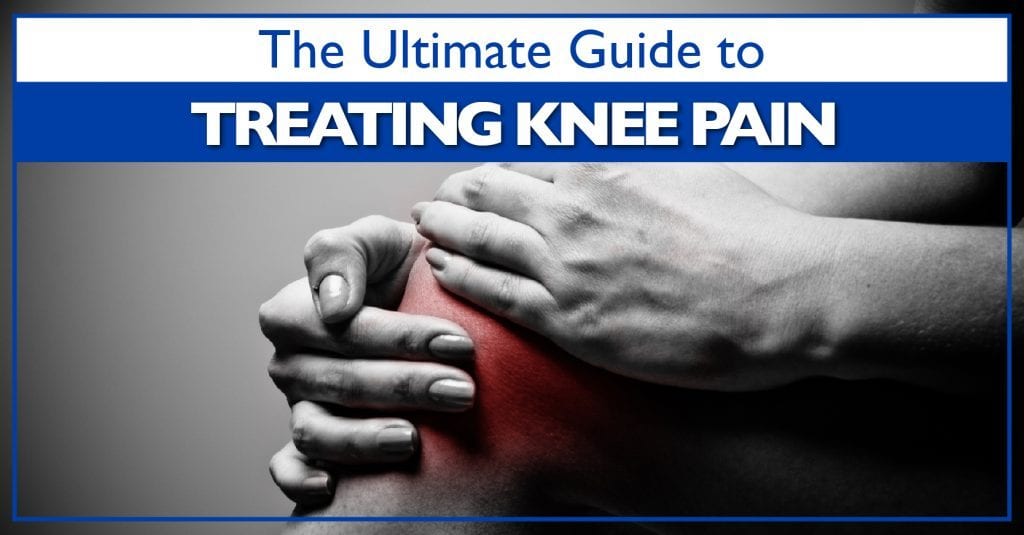
In my experience, unless due to direct trauma, the cause of knee pain is never from the knee itself. Rather you have to look above to the hip and the controlling muscles and below to the foundations and stability coming from the foot and ankle joints. Usually you find there’s too much uncontrolled movement or stability around the knee resulting in overuse injuries. Don’t get me wrong, there are multiple ways to injure your knee, and the knee is as complex as it is simple, however, the most common injuries surrounding the knee that we deal with on a daily basis are form overuse and poor biomechanics.
The 3 Most Common Knee Injuries we see in the clinic are:
1. ITB Syndrome
2. Patellofemoral Pain Syndrome
3. Patellar Tendinopathy
All 3 tend to be overuse injuries caused by poor alignment and control.
ITB Syndrome
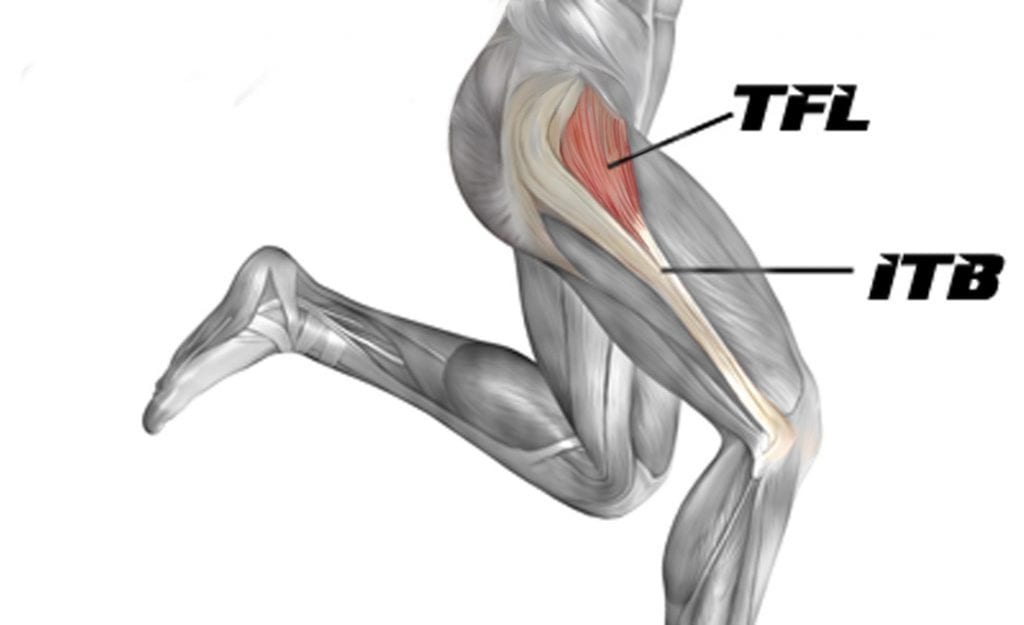
The ITB is the band that travels from the lateral hip down to the knee, controlled by two muscles, the Tensor Fascia Latae (TFL) and the gluteus Maximus ( glute max) helping to keep the knee aligned and to control unwanted movement.
Pain starts when the ITB is being overworked in an attempt to keep the knee aligned during walking and running and both the glute max and TFL tighten. This causes the ITB to pull tight and rub against the lateral knee joint resulting in irritation and pain.
Signs and Symptoms:
– Pain over the lateral aspect of the Knee when exercising
– Usually stops when you stop exercising
– Pain going upstairs but little to no pain going downstairs.
– Pain will usually increase the longer you exercise.
Progression of Injury
The pain becomes unremitting, and is felt as a constant dull ache behind the knee cap as the lateral pull of the ITB has started to cause a closely related injury called patellofemoral pain syndrome. You may also feel a dull throbbing at rest.
Treatment of ITB Syndrome
DO NOT FOAM ROLL THE ITB, instead focus on releasing and stretching the Glute Max and TFL, while correcting knee alignment and control.
Patellofemoral Pain Syndrome
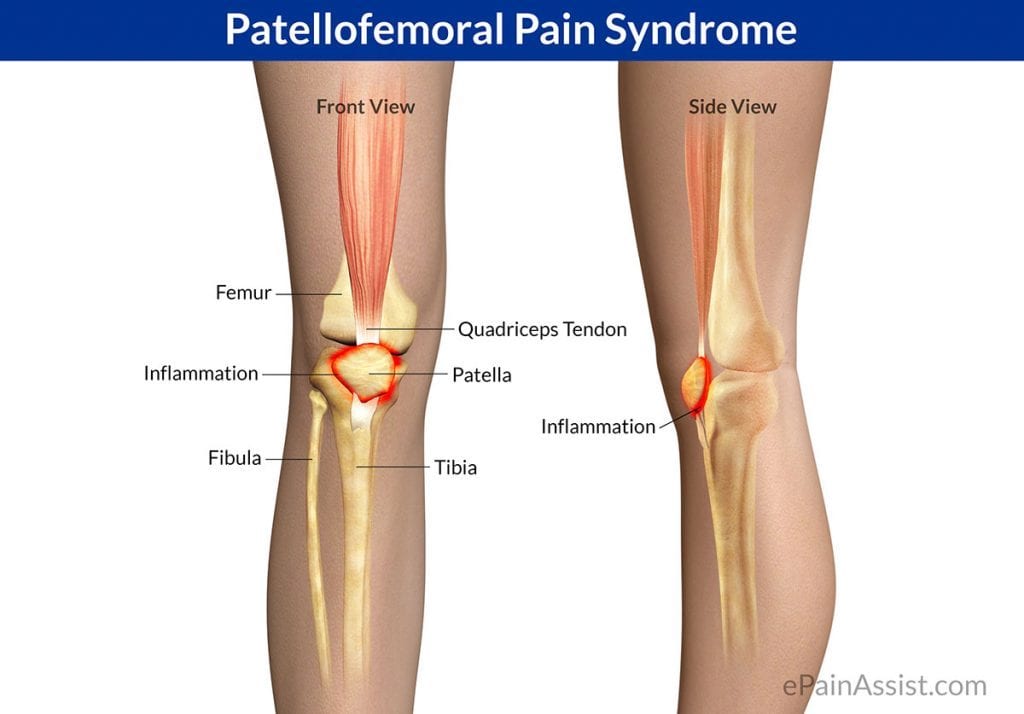
Patellofemoral pain syndrome is pain at the front of your knee, around your kneecap (patella). Closely linked to the ITB Syndrome, and is basically knee cap overload. Due to poor alignment and lack of control of movement at the knee, the patella grinds within its groove as the knee is flexed and extended causing irritation of the cartilage and pain.
Signs and Symptoms:
– Pain when Walking up or down stairs
– Pain when Kneeling or squatting
– Pain when Sitting with a bent knee for long periods of time
Patella Tendinopathy
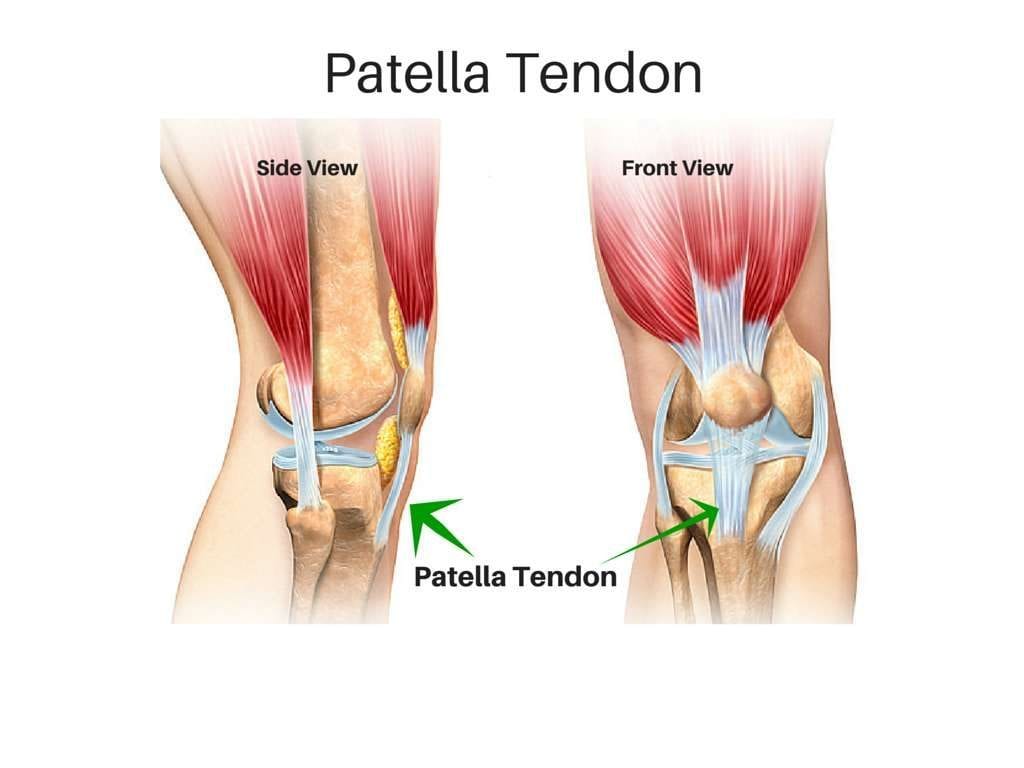
This tendon runs from the kneecap to the tibial tuberosity on the lower leg bone (tibia) and serves as the tendinous attachment for the quadriceps muscle. Injury, degeneration and inflammation to this tendon is called Patella Tendinitis, but once it becomes chronic and no more inflammation is found its then called a tendinopathy.
This injury is also known as jumpers knee and is associated with sports that involve frequent jumping, but this isn’t always the case.
Signs and Symptoms
– Pain Just below the kneecap, specifically when the quadriceps muscle is being used – walking upstairs
– Stiffness in the anterior knee
– Tight Quadriceps muscles
– Unable to kneel
Risk Factors / Causes of ITB Syndrome, Patellofemoral Pain Syndrome and Patella Tendinopathy:
– Flat Feet (Pronation Distortion Pattern)
– Loss of Ankle Mobility
– Poor Hip Stability
– Weak Glutes (Max, Med & Min)
– Weak VMO
– Tight TFL & Quads
– A sudden increase in training load
– Poor Footwear
– Poor Running Technique
Knee Pain Self Assessment
If a correct and meaningful treatment plan is to be put in place, we first must see where we are starting from. Once these weaknesses are identified and understood, corrective strategies can then be adopted and a rehab plan formulated to not only fix the underlying cause of your knee pain, but also make you perform better, while making more injury resilient.
Postural Assessment
If optimal stability and control of the knee are to be encouraged, the pricinples of correct static posture and biomechanics must be fully appreciated. Once these poor posture and stability patterns are identified then corrective strategies can be adopted.
The Most Common postural distortion pattern seen in knee pain is the pronation distortion pattern described below.
This can be a result of compensatory patterns from the top down (lower back and hip strength and control) or bottom up (foot posture and stability)
As you continue reading you’ll discover what the likely culprits of this posture are but if you do suffer from this posture statically or dynamically then i would suggest getting a trained professional to check you out before you progress.
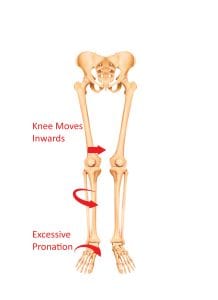
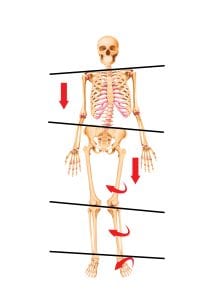
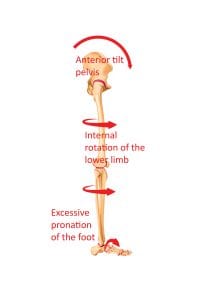
Top Down Causes:
– Length length Inequality
– Poor Core Stability
– Poor Glute Strength
– Tight Adductors / Hip Flexors / TFL
Bottom Up Causes:
– Flat Feet
– Lack Big Toe Extension
– Lack Ankle Mobility
– Tight Calves
– Poor Movement Patterns
– Poor Footwear
Ultimately this can lead to a number of related injuries, not listed to:
– ITB Syndrome
– Hip Bursitis
– Lower Back Pain
– Patellofemoral Pain
– Patellar Tendinopathy
– Hamstring Strains
– Calf Strains
– Achilles Tendinopathy
– Plantar Fasciitis
– Shin Splints
Foot Posture
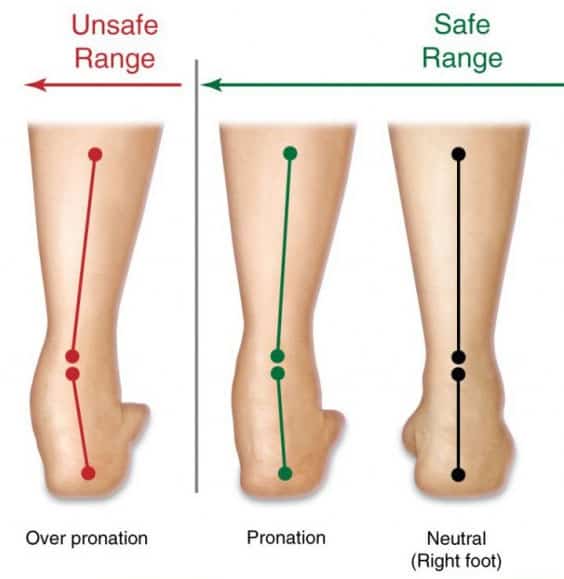
Over Pronation
If your feet look like the picture on the left, DON’T YOU DARE start running on them. You need some serious strengthening of your intrinsic foot musculature and insoles / orthotics are recommended. Go see a specialist orthotist for some custom made orthotics, you’ll need more than just off the shelf. You’ll also want to follow the foot strengthening exercises highlighted further down.
Pronation
If your feet look like the picture in the middle then you may get away with not having orthotics but some off the shelf ones would be recommended. You will also want to do the foot strengthening exercises below.
Neural
Feet like the picture on the right? Great feet! Look after them.
Big Toe Extension
Do these tests to determine 1. If you lack big toe extension 2. If its due to joint immobility or soft tissue restriction.
Assess Range of motion in Standing, Standing with knee bent, and non-weightbesring. 50 degrees is normal.
1: Standing – 50 degrees Good / Less than 50 degrees bend knee.
2: Knee Bent – Less than 50 degrees could be tight calves or joint restriction.
3: Non Weight bearing – 50 degrees or more = tight calves / Still less than 50 degrees = joint restriction
If you lack big toe extension, as you walk you’ll roll your foot into over pronation to compensate for the lack of mobility. This is usually one of the biggest causes of bunions.
Fix: Joint Restriction – Calf Raises with big toe extension
Fix: Soft Tissue Restriction – Calf Stretches & Plantar Fascia Rolling
See Exercises Here –> Running Rehab
Ankle Mobility
Do the test shown in the video:
As above, if you lack ankle mobility, your compensatory pattern is to over-pronate.
Over 10cm = Good / 6cm or Less = Bad
Also check for symmetry between ankles.
Hip Stability
To Test Static Hip Stability do a 1 Leg Stand as below:
Look for any:
– Drop in Hip Level
– Knee Falls Inwards
– Foot Rolls Inwards
To Test Dynamic Hip Stability do a 1 Leg Squat as below:
Look for any:
– Drop in Hip Level
– Knee Falls Inwards
– Foot Rolls Inwards
Glute Strength
Perform a glute bridge for 60 seconds.
Perform a 1 Leg Glute Bridge for 30 seconds each side.
Hip Flexibility
Thomas Test
Knee Pain Treatment
So you have figured out your faults, your weaknesses. Now its the fun stuff. The exercise you can do to fix it all.
Poor Hip Mobility
Foam Roll Quad
Release TFL
Stretch Hip Flexors & TFL
Stretch Adductors
Poor Ankle Mobility
Foam Roll Calf
Stretch Calves
Knee to Wall Mobilisation
Ankle Mobilisation
Big Toe Mobility
Roll Plantar Fascia
Big Toe Mobilisation
Foot Posture Strengthening
Towel Grabs
Glute Strengthening
Glute Bridges
Clams
Diagonal Monster Band Walks
Monster Band Walks
Hip Stability
1 Leg Balancing
1 Leg Mini Squats with Toe Taps
Core Strengthening
Patella Tendinopathy – Specific Treatment
Tendon Loading:
When it comes to the management of Patella Tendinopathy / Tendinosis, a focus on progressive loading of the patella tendon is paramount. Loading the tendon promotes tendon healing by essentially “re-injurying” the tendon and forcing the body to re-start the healing process.
Start Out with Isometric Exercises which provide a good analgesic effect on the tendon.
Partial Squat Holds (Double leg and Single Leg)
Wall Sit – Vary Height – Start Higher – Single Leg and Double Leg
Then when the pain subsides move onto more concentric and eccentric exercises which have the benefit of lengthening the tendon while strengthening.
1 Leg Squats to Bench – Eccentric
1 Leg Pistol Squats on decline Board
1 Leg Bench Step Lowers
These exercises are just a sample of many that can be used in a comprehensive treatment program. Set out to do 3 sets of 15 repetitions performed every other day. If there is a bit of discomfort while doing it, its fine. Tendinosis / Tendinopathy is one of the few conditions in which its fine if there’s a bit of discomfort as the tendon needs to be strengthened.
4/10 pain threshold or under is fine while performing the exercise as long as it doesn’t go over that, lasts after the session or the following days are painful then you have overdone it and need to back off. Start every other day and build up from there.
Summary
Ultimately, there are plenty of exercises you could be doing, but you don’t have to have a complicated routine with all the fancy equipment and exercises. The key is consistency. Figure out your weaknesses, pick the exercises that you can do easily with little or no equipment that can be done anywhere. Make a short routine – 15 minutes and do it daily. Once you outgrow those exercises, move onto more difficult ones, but always revisit the old ones to top them up.
Good Luck and Make it fun.
